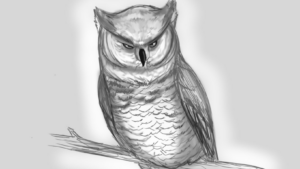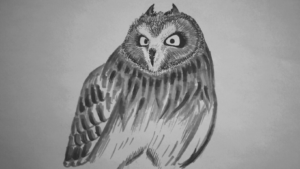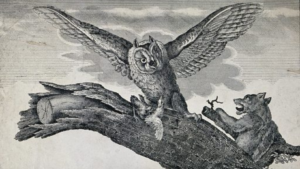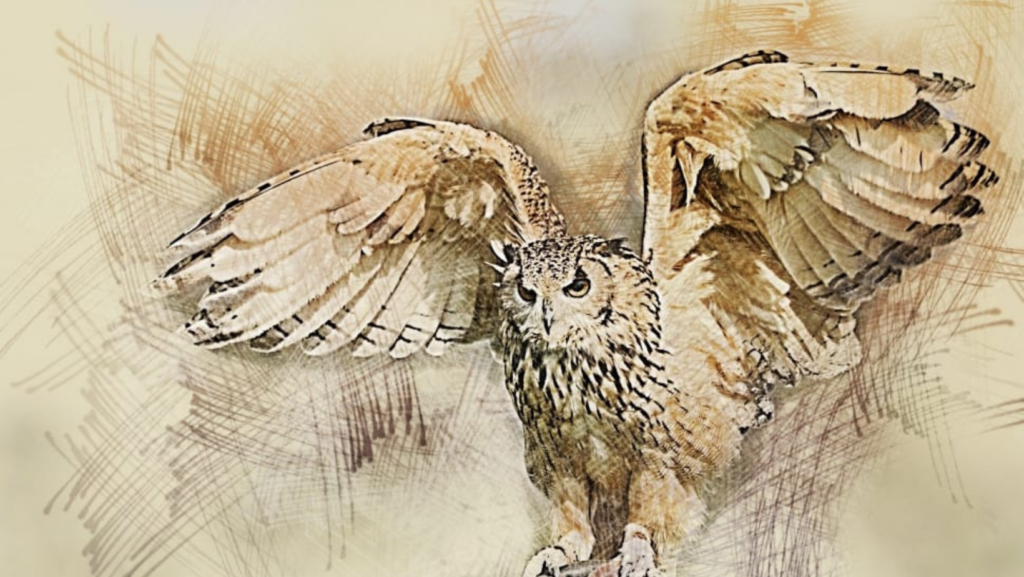Drawing an owl can seem like a daunting task, especially for beginners. But with the right approach anyone can master this art, even more today with the top gadgets available for everybody. This article will demystify the process, offering tips and techniques that’ll turn even the most novice artist into an owl-drawing expert.
Whether it’s capturing the owl’s intense gaze or its intricate feather patterns, we’ll guide you step by step. We’ll also delve into the importance of understanding an owl’s anatomy for a more realistic representation. So grab your sketchbook or find some agile softwares; it’s time to embark on a creative journey of drawing the majestic owl.
Drawing:lfgxzvm9-r8= Owl

In the realm of artistic expression, drawing owls has become a beloved pursuit. This section deepens the understanding of this phenomenon, exploring its latest captivating appeal among artists of all levels.
Owls captivate, not only because of their mysterious nature but also due to their compelling visual elements.
A unique combination of mystique and symbolism, owls resonate in diverse cultures, often representing wisdom, knowledge, and transition.
Artists find these attributes appealing as they provide unmatched potential for crafting meaningful and intriguing artwork.
Furthermore, the wide variety of owl species, each boasting distinct physical characteristics, affords artists with an abundance of inspiration.
Artistic Elements in Owl Drawings
Certainly, owls carry an array of artistic elements that artists strive to capture. Two distinct features usually dominate owl drawings: their circular, expressive eyes and the intricate feather patterns. Capturing the owl’s gaze is akin to imparting soul to the artwork, often evoking deep emotions. Feather patterns, on the other hand, offer fascinating opportunities to depict a range of textures. These include the soft, fluffy plumage of an owl’s chest, the sleek, pointed feathers on their wings, and the stiff, bristle-like feathers around their beaks. Beyond these, the fundamental understanding of the owl’s anatomy elevates an artist’s portrayal, achieving a more accurate and realistic representation of these fascinating birds.
Essential Tools for Drawing Owls

After understanding the key facets of drawing owls, the appropriate tools hold equal significance. This section delves into the fundamental aspects of choosing the right sketching materials and the importance of paper quality, two pivotal elements for creating a captivating owl sketch.
Choosing the Right Sketching Materials
Selecting the proper sketching tools is paramount in crafting a successful owl sketch. Beginner artists often stick solely to graphite pencils. However, expanding into charcoals, pastels, colored pencils, or even watercolors adds depth and vibrancy, particularly when rendering an owl’s intricate feather patterns. For instance, graphite pencils work excellently for initial sketching, whereas charcoals offer the ability to create darker, more pronounced lines and shadows essential to an owl’s distinct texture.
In the realm of colored pencils, artists have flexibility in showcasing the diverse shades found in particular owl species. For example, the Barred Owl possesses a range of brown and white hues, proving ideal for experimenting with colored tools. Moreover, pastels and watercolors facilitate a softer, more painterly portrayal of owls, which may align with certain artists’ styles while capturing the symbolic eloquence linked with these mysterious creatures.
Importance of Paper Quality

Besides the sketching materials, the integrity of the paper chosen often dictates the quality of the final sketch. Pristine, high-quality paper serves as a smooth canvas, allowing one’s sketching tools to glide effortlessly and show true colors vividly. For example, a heavier weight sketching paper, like 60-90lb, sustains charcoal and graphite well, reducing the likelihood of paper tears and enhancing the overall look of an owl sketch.
In contrast, watercolor enthusiasts find heavier weight paper, such as 300lb, beneficial in maintaining the paper’s structure despite the wet medium. Additionally, the texture of the paper, whether it be smooth or rough, can either add to or take away from the intricate feather patterns of the owl. For example, a smooth paper texture favors detailed work, letting artists portray an owl with precision, while a rougher texture paper brings out spontaneous and expressive possibilities in owl art pieces.

